Optimize care for patients undergoing peritoneal dialysis using this nursing care plan and management guide. Tailored to address their unique needs, enhance your understanding of nursing assessment, interventions, goals, and diagnosis.
What is Peritoneal Dialysis
When your kidneys are healthy, they clean your blood. If your kidneys fail, you will need a life-saving treatment, this is when dialysis takes place. Dialysis is the process of removing fluid and waste products from the body, a function usually performed by the kidneys, through artificial means. Two types of dialysis: hemodialysis and peritoneal dialysis. Peritoneal dialysis accomplishes the removal of waste and excess fluid by using the abdominal lining, called the peritoneal membrane, as a filter a membrane across which fluids and dissolved substances (electrolytes, urea, glucose, albumin, and other small molecules) are exchanged from the blood.
Peritoneal dialysis is similar in principle to hemodialysis. Both of these forms of renal replacement therapy depend upon the passive movement of water and dissolved substances (solutes) across a semipermeable membrane. This process is called diffusion. The direction of movement of solute is determined by the relative concentration on each side of the membrane so that a substance goes from the side of greater to lesser concentration.
The peritoneum serves as the semipermeable membrane permitting transfer of nitrogenous wastes/toxins and fluid from the blood into a dialysate solution. Peritoneal dialysis is sometimes preferred because it uses a simpler technique and provides more gradual physiological changes than hemodialysis.
The manual single-bag method is usually done as an inpatient procedure with short dwell times of only 30–60 minutes and is repeated until desired effects are achieved. The most commonly used type of peritoneal dialysis is continuous ambulatory peritoneal dialysis (CAPD), which permits the patient to manage the procedure at home with bag and gravity flow, using a prolonged dwell time at night and a total of 3–5 cycles daily, 7 days a week. No machinery is required.
Continuous cycling peritoneal dialysis (CCPD) mechanically cycles shorter dwell times during night (3–6 cycles) with one 8-hr dwell time during daylight hours, increasing the patient’s independence. An automated machine is required to infuse and drain dialysate at preset intervals.
Nursing Care Plans and Management
The nursing care plan goals for patients undergoing peritoneal dialysis include maintaining fluid and electrolyte balance, monitoring vital signs and weight changes, assessing for signs of infection, and ensuring proper placement and functioning of the catheter. Another important goal is to educate the patient on the self-care techniques needed for peritoneal dialysis and to provide emotional support throughout the treatment process.
Nursing Problem Priorities
The following are the nursing priorities for patients on peritoneal dialysis:
- Care and management of the peritoneal catheter and dialysis access site
- Monitoring and assessment of dialysis fluid parameters and fluid balance
- Infection prevention and control measures
- Regular monitoring of vital signs and assessment of dialysis adequacy
- Education and support for the patient and their caregivers about peritoneal dialysis technique, self-care, and compliance with the treatment plan
- Management of complications, such as peritonitis, catheter-related infections, or hernias
- Collaboration with the healthcare team for adjustments in dialysis prescription and medication management
- Nutritional support and monitoring of dietary needs specific to peritoneal dialysis
Nursing Assessment
Assess for the following subjective and objective data:
- Discomfort or pain during the procedure
- Reports of changes in appetite, energy levels, or sleep patterns
- Complaints of abdominal pain, bloating, or feeling full
- Vital signs, including blood pressure, heart rate, and temperature
- Assessment of the peritoneal catheter site for signs of infection, such as redness, swelling, or drainage
- Measurement of weight to monitor fluid balance
- Evaluation of dialysis fluid parameters, including color, clarity, and presence of fibrin or debris
- Assessment of dialysis adequacy, including ultrafiltration volumes and assessment of fluid removal.
- Monitoring for signs of complications, such as peritonitis, hernias, or catheter malfunction
Assess for factors related to the cause of problems encountered by patients on peritoneal dialysis:
- Use of hypertonic dialysate with excessive removal of fluid from circulating volume
- Abdominal pressure/restricted diaphragmatic excursion; rapid infusion of dialysate; pain
- Inflammatory process (e.g., atelectasis/pneumonia)
- Contamination of the catheter during insertion, periodic changing of tubings/bags
- Skin contaminants at the catheter insertion site
- Sterile peritonitis (response to the composition of dialysate)
- Insertion of a catheter through abdominal wall/catheter irritation, improper catheter placement
- Irritation/infection within the peritoneal cavity
- Infusion of cold or acidic dialysate, abdominal distension, rapid infusion of dialysate
- Inadequate osmotic gradient of dialysate
- Fluid retention (malpositioned or kinked/clotted catheter, bowel distension; peritonitis, scarring of peritoneum)
- Excessive PO/IV intake
Nursing Diagnosis
Following a thorough assessment, a nursing diagnosis is formulated to specifically address the challenges associated with peritoneal dialysis based on the nurse’s clinical judgement and understanding of the patient’s unique health condition. While nursing diagnoses serve as a framework for organizing care, their usefulness may vary in different clinical situations. In real-life clinical settings, it is important to note that the use of specific nursing diagnostic labels may not be as prominent or commonly utilized as other components of the care plan. It is ultimately the nurse’s clinical expertise and judgment that shape the care plan to meet the unique needs of each patient, prioritizing their health concerns and priorities.
Nursing Goals
Goals and expected outcomes may include:
- The patient will achieve the desired alteration in fluid volume and weight with BP and electrolyte levels within the acceptable range.
- The patient will experience no symptoms of dehydration.
- The patient will display an effective respiratory pattern with clear breath sounds, and ABGs within the patient’s normal range.
- The patient will experience no signs of dyspnea/cyanosis.
- The patient will identify interventions to prevent/reduce the risk of infection.
- The patient will experience no signs/symptoms of infection.
- The patient will verbalize a decrease in pain/discomfort.
- The patient will demonstrate a relaxed posture/facial expression and will be able to sleep/rest appropriately.
- The patient will experience no injury to the bowel or bladder.
- The patient will demonstrate dialysate outflow exceeding/approximating infusion.
- The patient will experience no rapid weight gain, edema, or pulmonary congestion.
Nursing Interventions and Actions
Therapeutic interventions and nursing actions for patients on peritoneal dialysis may include:
1. Promoting Fluid Balance
One of the potential risks associated with peritoneal dialysis is deficient fluid volume. This can occur if too much fluid is removed during the dialysis process, leading to dehydration and electrolyte imbalances.
Measure and record intake and output, including all body fluids, such as wound drainage, nasogastric output, and diarrhea.
Provides information about the status of the patient’s loss or gain at the end of each exchange.
Maintain a record of inflow and outflow volumes and individual and cumulative fluid balance.
Provides information about the status of the patient’s loss or gain at the end of each exchange.
Assess Hgb and Hct and replace blood components, as indicated.
This is important in view of under-dialysis in patients of normal or near normal hematocrit and suggests the need for modification of dialysis prescription in such situations.
Adhere to the schedule for draining dialysate from the abdomen.
Prolonged dwell times, especially when 4.5% glucose solution is used, may cause excessive fluid loss.
Weigh when the abdomen is empty, following initial 6–10 runs, then as indicated
Detects rate of fluid removal by comparison with baseline body weight.
Monitor vital signs. watch and report any signs of pericarditis (pleuritic chest pain, tachycardia, pericardial friction, rub), inadequate renal perfusion (hypotension), and acidosis.
Patients with end-stage renal disease (ESRD) may develop pericardial disease.
Monitor BP (lying and sitting) and pulse. Note the level of jugular pulsation
Decreased BP, postural hypotension, and tachycardia are early signs of hypovolemia
Note reports of dizziness, nausea, and increased thirst.
May indicate hypovolemia and hyperosmolar syndrome.
Inspect mucous membranes, evaluate skin turgor, peripheral pulses, capillary refill
Dry mucous membranes, poor skin turgor and diminished pulses, and capillary refill are indicators of dehydration and the need for increased intake and changes in the strength of dialysate.
Monitor laboratory studies as indicated: Serum sodium and glucose levels.
See Laboratory and Diagnostic Procedure
Maintain proper electrolyte balance. Serum potassium levels. Watch for symptoms of hyperkalemia (malaise, anorexia, paresthesia, or muscle weakness) and electrocardiogram changes (tall peaked T waves, widening QRS segment, and disappearing P waves), and report them immediately.
Although a small percentage of patients are chronically hypokalemic, hyperkalemia is by far the most common abnormality in dialysis patients.
Assess patients frequently, especially during emergency treatment to lower potassium levels. If the patient receives hypertonic glucose and insulin infusions, monitor potassium levels. If you give sodium polystyrene sulfonate rectally, make sure the patient doesn’t retain it and become constipated.
To prevent bowel perforation.
Maintain nutritional status. Provide a high-calorie, low-protein, low-sodium, and low-potassium diet, with vitamin supplements.
To balance nutritional intake.
Aggressively restore fluid volume after major surgery or trauma.
Dialysis disequilibrium syndrome is a frequent complication of renal replacement therapy and seems to be related to changes in fluid balance.
2. Managing Effective Breathing Pattern
Breathing pattern problems encountered by patients with peritoneal dialysis can arise due to factors such as increased intra-abdominal pressure from fluid accumulation, leading to reduced diaphragmatic excursion and restricted lung expansion. Also, fluid overload or electrolyte imbalances can contribute to respiratory distress and altered breathing patterns.
Monitor respiratory rate and effort. Reduce infusion rate if dyspnea is present.
Tachypnea, dyspnea, shortness of breath, and shallow breathing during dialysis suggest diaphragmatic pressure from the distended peritoneal cavity or may indicate developing complications.
Auscultate lungs, noting decreased, absent, or adventitious breath sounds such as crackles, wheezes, and rhonchi.
Decreased areas of ventilation suggest the presence of atelectasis, whereas adventitious sounds may suggest fluid overload, retained secretions, or infection.
Note the character, amount, and color of secretions.
The patient is susceptible to pulmonary infections as a result of the depressed cough reflex and respiratory effort, increased viscosity of secretions, as well as altered immune response, and chronic and debilitating disease.
Elevate the head of bed or have the patient sit up in a chair. Promote deep-breathing exercises and coughing
Facilitates chest expansion and ventilation and mobilization of secretions.
Review ABGs and pulse oximetry and serial chest X-rays.
See Laboratory and Diagnostic Procedure
Administer supplemental O2 as indicated.
Maximizes oxygen for vascular uptake, preventing or lessening hypoxia.
Maintain nutritional status. Provide a high-calorie, low-protein, low-sodium, and low-potassium diet, with vitamin supplements.
To balance nutritional intake.
3. Managing Pain
Acute pain can be a complication of peritoneal dialysis, which is a type of renal replacement therapy that uses the peritoneal membrane to remove waste and excess fluids from the body. Acute pain during PD can occur for a variety of reasons, including catheter-related pain, peritonitis, dialysate-related pain, or abdominal cramps.
Investigate patient’s reports of pain; note intensity (0–10), location, and precipitating factors
Assists in the identification of the source of pain and appropriate interventions.
Monitor for pain that begins during inflow and continues during the equilibration phase. Slow infusion rate as indicated.
Pain occurs at these times if acidic dialysate causes a chemical irritation of the peritoneal membrane.
Explain that initial discomfort usually subsides after the first few exchanges.
Information may reduce anxiety and promote relaxation during the procedure.
Note reports of discomfort that are most pronounced near the end of inflow and instill no more than 2000 mL of solution at a single time.
Likely the result of abdominal distension from the dialysate. The amount of infusion may have to be decreased initially.
Prevent air from entering the peritoneal cavity during infusion. Note the report of pain in the area of the shoulder blade.
Inadvertent introduction of air into the abdomen irritates the diaphragm and results in referred pain to the shoulder blade. This type of discomfort may also be reported during the initiation of therapy or during infusions and usually is related to stretching and irritation of the diaphragm with abdominal distension. Smaller exchange volumes may be required until the patient adjusts.
Elevate the head of bed at intervals. Turn the patient from side to side. Provide back care and tissue massage
Position changes and gentle massage may relieve abdominal and general muscle discomfort.
Warm dialysate to body temperature before infusing
Warming the solution increases the rate of urea removal by dilating peritoneal vessels. Cold dialysate causes vasoconstriction, which can cause discomfort and excessively lower the core body temperature, precipitating cardiac arrest.
Monitor for severe or continuous abdominal pain and temperature elevation (especially after dialysis has been discontinued).
May indicate developing peritonitis.
Encourage the use of relaxation techniques
Redirects attention, and promotes a sense of control.
Administer analgesics as indicated.
See Pharmacologic Management
Add sodium hydroxide to dialysate, if indicated.
Occasionally used to alter pH if the patient is not tolerating acidic dialysate
4. Promoting Infection Control and Minimizing Risk for Infection
There is a potential risk of infection associated with the use of a peritoneal catheter. The peritoneal catheter provides a pathway for the infusion and drainage of dialysis solution, which can create a direct route for bacteria or other pathogens to enter the peritoneal cavity. This can lead to peritonitis, an infection of the peritoneal membrane, which can cause pain, fever, inflammation, and impaired dialysis function.
During peritoneal dialysis, position the patient carefully. Elevate the head of the bed.
To reduce pressure on the diaphragm and aid respiration.
Be alert for signs of infection (cloudy drainage, elevated temperature) and, rarely, bleeding.
Cloudy effluent is suggestive of peritoneal infection.
Observe meticulous aseptic techniques and wear masks during catheter insertion, dressing changes, and whenever the system is opened. Change tubings per protocol.
Prevents the introduction of organisms and airborne contamination that may cause infection.
Change dressings as indicated, being careful not to dislodge the catheter. Note character, color, odor, or drainage from around the insertion site.
A moist environment promotes bacterial growth. Purulent drainage at the insertion site suggests the presence of local infection. Note: Polyurethane adhesive film (blister film) dressings have been found to decrease the amount of pressure on the catheter and exit site as well as the incidence of site infections.
Observe the color and clarity of effluent.
Cloudy effluent is suggestive of peritoneal infection.
Apply a povidone-iodine (Betadine) barrier in a distal, clamped portion of the catheter when intermittent dialysis therapy is used.
Reduces risk of bacterial entry through catheter between dialysis treatments when the catheter is disconnected from a closed system
Investigate reports of nausea and vomiting, increased and severe abdominal pain; rebound tenderness, fever, and leukocytosis.
Signs and symptoms suggest peritonitis, requiring prompt intervention.
Monitor the WBC count of effluent
See Laboratory and Diagnostic Procedure
Obtain specimens of blood, effluent, and drainage from the insertion site as indicated for culture and sensitivity.
See Laboratory and Diagnostic Procedure
Administer antibiotics systemically or in dialysate as indicated.
See Pharmacologic Management
5. Promoting Safety and Minimizing Injury Risk
There is a potential risk of trauma associated with the use of peritoneal dialysate. Peritoneal dialysate is the solution that is infused into the peritoneal cavity to facilitate dialysis. The infusion and drainage of dialysate can cause trauma to the peritoneal membrane if not performed properly. Some factors that can increase the risk of trauma in peritoneal dialysis include improper infusion and drainage technique, catheter-related trauma, repeated use of the same site, or peritoneal membrane damage.
Review the patient’s medical history, including prior surgeries and any history of abdominal or pelvic infections.
To determine the risk of peritoneal catheter-related trauma.
Assess the catheter site for any signs of redness, swelling, or tenderness.
These could indicate infection or trauma.
Check for any signs of catheter movement, such as displacement or twisting.
These could cause mechanical stress and increase the risk of trauma.
Assess the abdominal wall for any signs of weakness or herniation.
This could put the catheter at risk of trauma or displacement.
Observe the amount and consistency of peritoneal fluid being drained, as well as any signs of cloudy or bloody fluid.
These could indicate a peritoneal infection or trauma.
Ask the patient about any discomfort or pain they may be experiencing.
This could be an indicator of trauma or catheter-related issues.
Review the patient’s medical record for any complications related to the PD catheter, such as peritonitis or catheter exit-site infections.
Have the patient empty the bladder before peritoneal catheter insertion if an indwelling catheter is not present.
An empty bladder is more distant from the insertion site and reduces the likelihood of being punctured during catheter insertion.
Anchor catheter and tubing with tape. Stress the importance of the patient avoiding pulling or pushing on the catheter. Restrain hands if indicated.
Reduces risk of trauma by manipulation of the catheter.
Note the presence of fecal material in dialysate effluent or a strong urge to defecate, accompanied by severe, watery diarrhea.
Suggests bowel perforation with the mixing of dialysate and bowel contents.
Note reports of intense urge to void, or large urine output following initiation of dialysis run. Test urine for sugar as indicated.
Suggests bladder perforation with dialysate leaking into the bladder. The presence of glucose-containing dialysate in the bladder will elevate the glucose level of urine.
Stop dialysis if there is evidence of bowel and bladder perforation, leaving the peritoneal catheter in place.
Prompt action will prevent further injury. Immediate surgical repair may be required. Leaving the catheter in place facilitates diagnosing and locating the perforation
6. Preventing Fluid Overload
Fluid overload can occur in patients on peritoneal dialysis when the amount of fluid being absorbed during the dialysis process exceeds the amount being removed, leading to an imbalance. This can result in symptoms such as edema, shortness of breath, and increased blood pressure.
Assess the patency of the catheter, noting the difficulty in draining. Note the presence of fibrin strings and plugs.
The slowing of flow rate and presence of fibrin suggests partial catheter occlusion requiring further evaluation and intervention
Check tubing for kinks; note the placement of bottles and bags. Anchor catheter so that adequate inflow/outflow is achieved.
Improper functioning of equipment may result in retained fluid in the abdomen and insufficient clearance of toxins.
Monitor BP and pulse, noting hypertension, bounding pulses, neck vein distension, and peripheral edema; measure CVP if available.
Elevations indicate hypervolemia. Assess heart and breath sounds, noting S3 and crackles, and rhonchi. Fluid overload may potentiate HF and pulmonary edema.
Assess for headache, muscle cramps, mental confusion, and disorientation.
Symptoms suggest hyponatremia or water intoxication
Record serial weights, and compare with I&O balance. Weigh the patient when the abdomen is empty of dialysate (consistent reference point).
Serial body weights are an accurate indicator of fluid volume status. A positive fluid balance with an increase in weight indicates fluid retention.
Note abdominal distension associated with decreased bowel sounds, changes in stool consistency, and reports of constipation.
Bowel distension and constipation may impede the outflow of effluent.
Monitor serum sodium, BUN, and creatinine levels.
See Laboratory and Diagnostic Procedure
Turn from side to side, elevate the head of the bed, and apply gentle pressure to the abdomen.
May enhance the outflow of fluid when the catheter is malpositioned and obstructed by the omentum.
Evaluate the development of tachypnea, dyspnea, and increased respiratory effort. Drain dialysate, and notify the physician.
Abdominal distension and diaphragmatic compression may cause respiratory distress.
Alter dialysate regimen as indicated.
Changes may be needed in the glucose or sodium concentration to facilitate efficient dialysis
Add heparin to initial dialysis runs; assist with irrigation of catheter with heparinized saline.
May be useful in preventing fibrin clot formation, which can obstruct peritoneal catheter.
Maintain a record of inflow and outflow volumes and cumulative fluid balance
In most cases, the amount drained should equal or exceed the amount instilled. A positive balance indicates the need for further evaluation.
Administer diuretics as prescribed.
See Pharmacologic Management
Maintain fluid restriction as indicated.
Fluid restrictions may have to be continued to decrease fluid volume overload.
7. Administering Medications and Pharmacologic Support
Medications used in peritoneal dialysis serve various purposes. Antibiotics are commonly prescribed to prevent or treat peritonitis, while pain medications can be administered to manage any discomfort associated with the procedure or underlying conditions. While medications such as diuretics may be used to address the fluid imbalance, and phosphate binders are given to control phosphate levels in patients with chronic kidney disease undergoing peritoneal dialysis.
Analgesics (NSAIDs or opioids)
Pain medications, such as nonsteroidal anti-inflammatory drugs (NSAIDs) or opioids, can help manage pain caused by abdominal distension, catheter-related issues, or surgical site discomfort.
Antibiotics
Antibiotics prevent and treat peritonitis, a serious infection that can occur in patients with peritoneal dialysis. They are administered to effectively eradicate the causative microorganisms and prevent the infection from spreading, ensuring the safety and efficacy of the dialysis procedure.
Heparin
The use of heparin helps ensure the uninterrupted flow of dialysate, optimizing the effectiveness of peritoneal dialysis and preventing potential issues associated with catheter malfunction or clot formation.
Diuretics
Diuretics are used in peritoneal dialysis to promote fluid removal and maintain optimal fluid balance. They work by increasing urine output, helping to reduce excess fluid in the body, and alleviating symptoms of fluid overload such as edema and hypertension.
8. Monitoring Laboratory and Diagnostic Procedures
Common tests include regular measurements of blood chemistry, such as electrolytes, blood urea nitrogen (BUN), and creatinine, to evaluate dialysis adequacy and assess metabolic status. While peritoneal fluid analysis, including cell count, culture, and sensitivity, is performed to detect peritonitis and guide appropriate antibiotic therapy, lastly, imaging studies like ultrasound or X-ray may be used to assess the placement and function of the peritoneal catheter and identify any complications.
Serum sodium and glucose levels.
Hypertonic solutions may cause hypernatremia by removing more water than sodium. In addition, dextrose may be absorbed from the dialysate, thereby elevating serum glucose.
BUN and Creatinine
BUN (Blood Urea Nitrogen) and creatinine are commonly used markers in peritoneal dialysis to assess the adequacy of dialysis and monitor the overall kidney function. BUN reflects the amount of urea nitrogen in the blood, while creatinine indicates the muscle breakdown product, both of which are cleared during dialysis to ensure the removal of waste products and maintain optimal fluid balance in the body.
ABGs and pulse oximetry and serial chest X-rays.
Changes in Pao2 and Paco2 and the appearance of infiltrates and congestion on chest x-ray suggest developing pulmonary problems.
WBC count
The presence of WBCs initially may reflect normal response to a foreign substance; however, continued and new elevation suggests developing an infection.
Culture and Sensitivity
Culture and sensitivity testing is a procedure that involves collecting a sample of peritoneal fluid to identify the presence of any microorganisms, such as bacteria or fungi, and determine their susceptibility to specific antibiotics. The results of culture and sensitivity testing guide the selection of appropriate antimicrobial therapy, helping to effectively treat peritonitis, a serious infection that can occur in patients on peritoneal dialysis, and minimize the risk of complications.
Serum Sodium
Elevated sodium levels can be present in patients undergoing peritoneal dialysis due to inadequate fluid removal during the dialysis process, leading to a relative concentration of sodium in the bloodstream. This can occur when the dwell time or volume of dialysate used is insufficient to adequately remove sodium from the body, resulting in an imbalance.
Recommended Resources
Recommended nursing diagnosis and nursing care plan books and resources.
Disclosure: Included below are affiliate links from Amazon at no additional cost from you. We may earn a small commission from your purchase. For more information, check out our privacy policy.
Ackley and Ladwig’s Nursing Diagnosis Handbook: An Evidence-Based Guide to Planning Care
We love this book because of its evidence-based approach to nursing interventions. This care plan handbook uses an easy, three-step system to guide you through client assessment, nursing diagnosis, and care planning. Includes step-by-step instructions showing how to implement care and evaluate outcomes, and help you build skills in diagnostic reasoning and critical thinking.

Nursing Care Plans – Nursing Diagnosis & Intervention (10th Edition)
Includes over two hundred care plans that reflect the most recent evidence-based guidelines. New to this edition are ICNP diagnoses, care plans on LGBTQ health issues, and on electrolytes and acid-base balance.

Nurse’s Pocket Guide: Diagnoses, Prioritized Interventions, and Rationales
Quick-reference tool includes all you need to identify the correct diagnoses for efficient patient care planning. The sixteenth edition includes the most recent nursing diagnoses and interventions and an alphabetized listing of nursing diagnoses covering more than 400 disorders.

Nursing Diagnosis Manual: Planning, Individualizing, and Documenting Client Care
Identify interventions to plan, individualize, and document care for more than 800 diseases and disorders. Only in the Nursing Diagnosis Manual will you find for each diagnosis subjectively and objectively – sample clinical applications, prioritized action/interventions with rationales – a documentation section, and much more!

All-in-One Nursing Care Planning Resource – E-Book: Medical-Surgical, Pediatric, Maternity, and Psychiatric-Mental Health
Includes over 100 care plans for medical-surgical, maternity/OB, pediatrics, and psychiatric and mental health. Interprofessional “patient problems” focus familiarizes you with how to speak to patients.

See also
Other recommended site resources for this nursing care plan:
- Nursing Care Plans (NCP): Ultimate Guide and Database MUST READ!
Over 150+ nursing care plans for different diseases and conditions. Includes our easy-to-follow guide on how to create nursing care plans from scratch. - Nursing Diagnosis Guide and List: All You Need to Know to Master Diagnosing
Our comprehensive guide on how to create and write diagnostic labels. Includes detailed nursing care plan guides for common nursing diagnostic labels.
Other care plans and nursing diagnoses related to reproductive and urinary system disorders:
- Acute Glomerulonephritis | 4 Care Plans
- Acute Renal Failure | 6 Care Plans
- Benign Prostatic Hyperplasia (BPH) | 5 Care Plans
- Chronic Renal Failure | 10 Care Plans
- Hemodialysis | 3 Care Plans
- Hysterectomy (TAHBSO) | 6 Care Plans
- Mastectomy | 15 Care Plans
- Menopause | 6 Care Plans
- Nephrotic Syndrome | 5 Care Plans
- Peritoneal Dialysis | 6 Care Plans
- Prostatectomy | 6 Care Plans
- Urolithiasis (Renal Calculi) | 4 Care Plans
- Urinary Tract Infection | 4 Care Plans
- Vesicoureteral Reflux (VUR) | 5 Care Plans
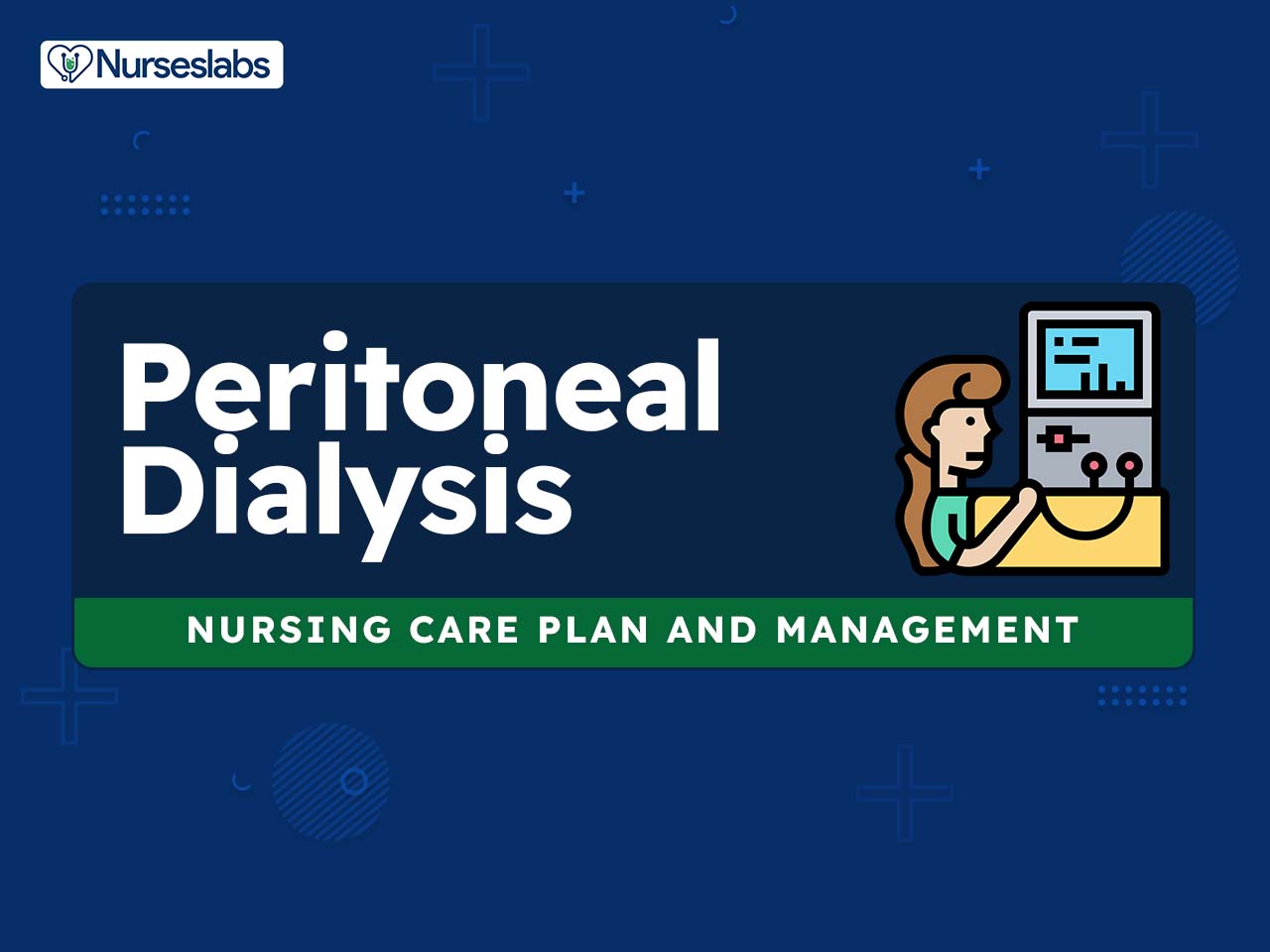
























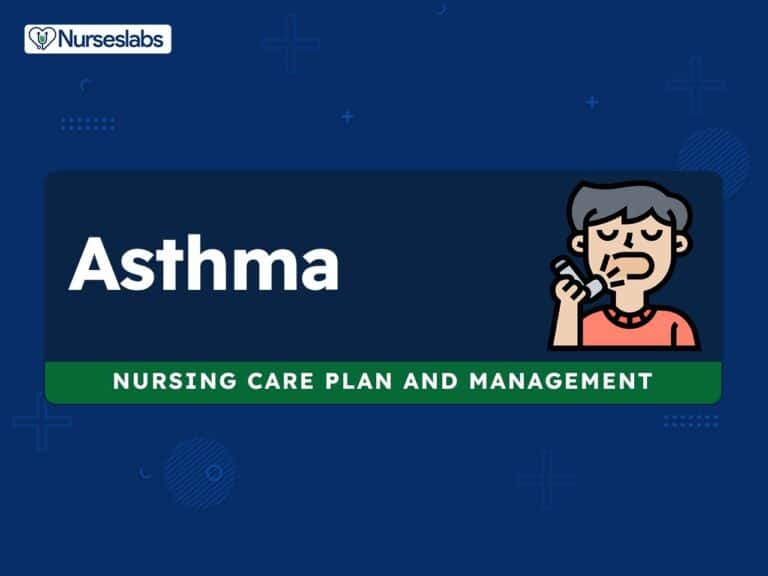
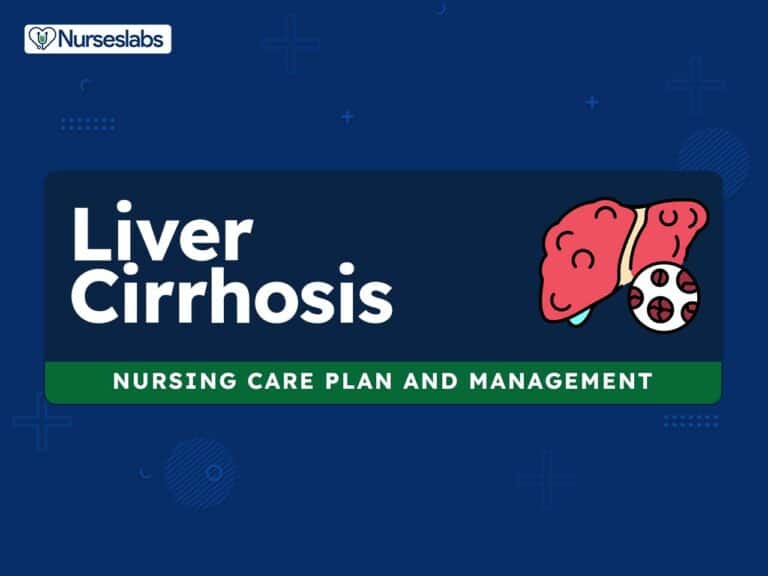
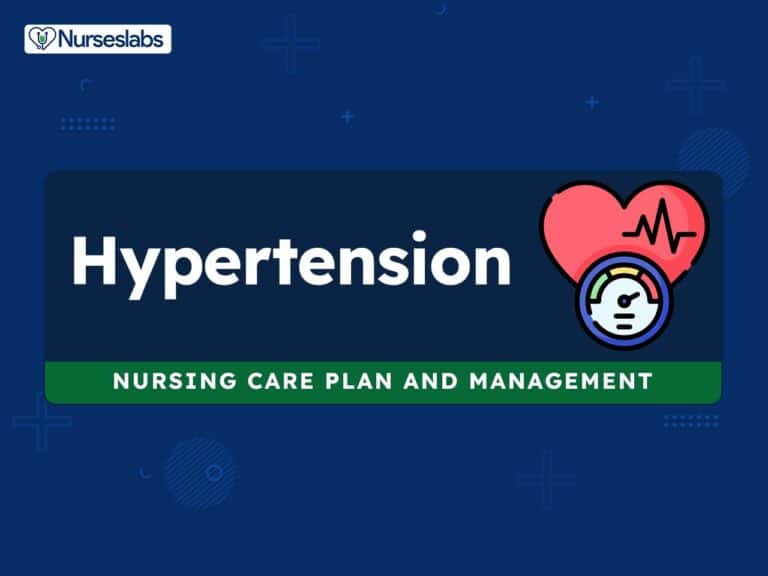

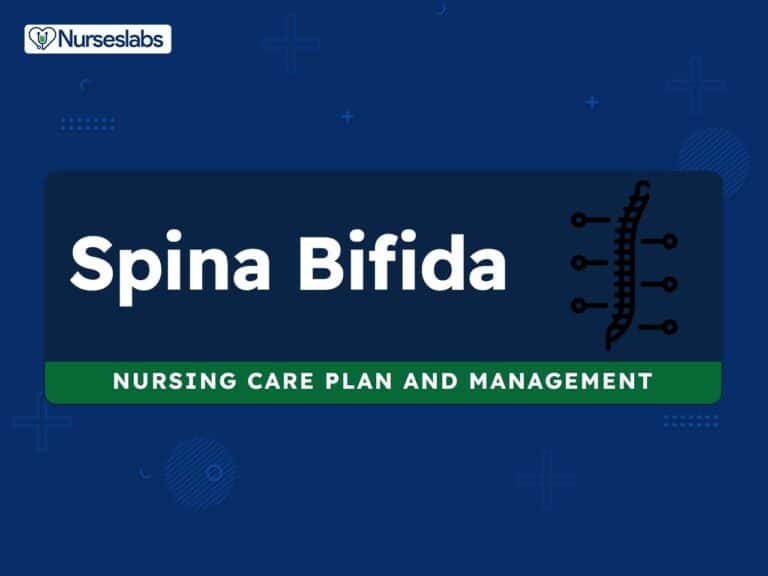
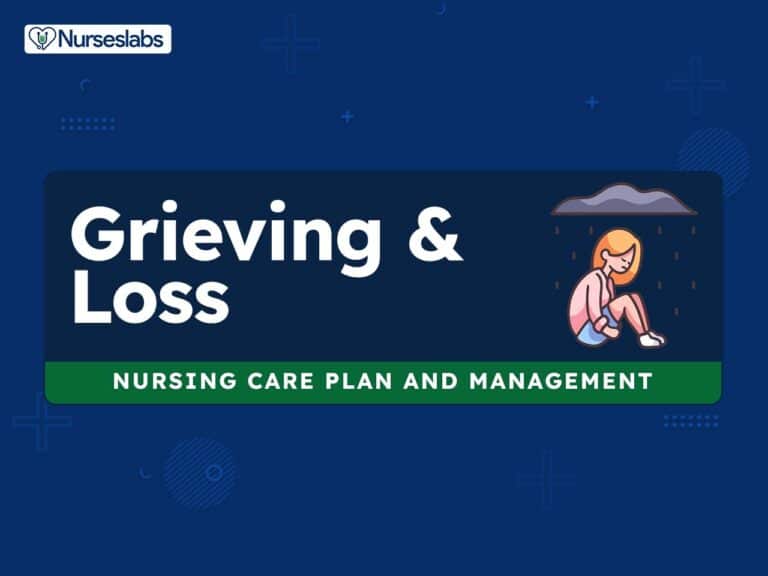

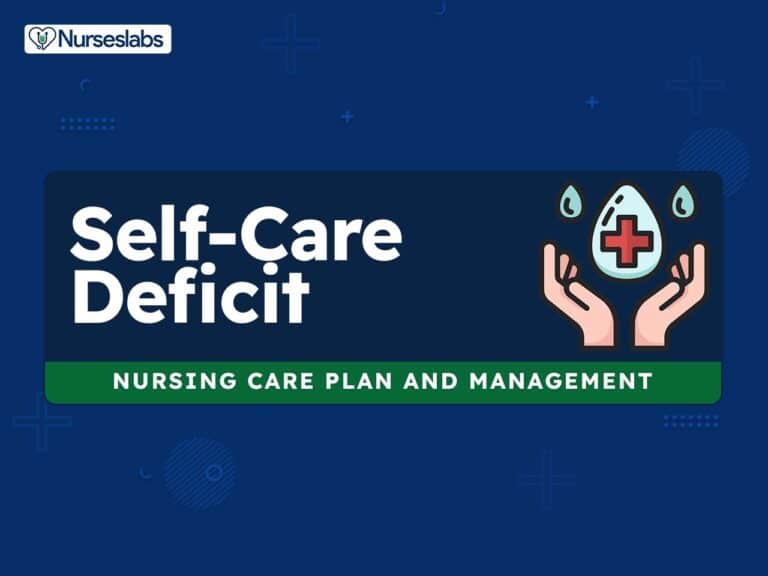
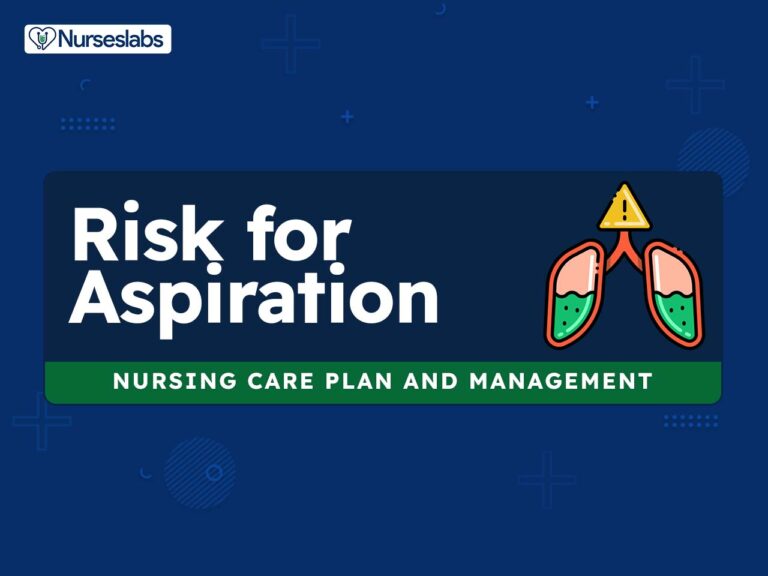


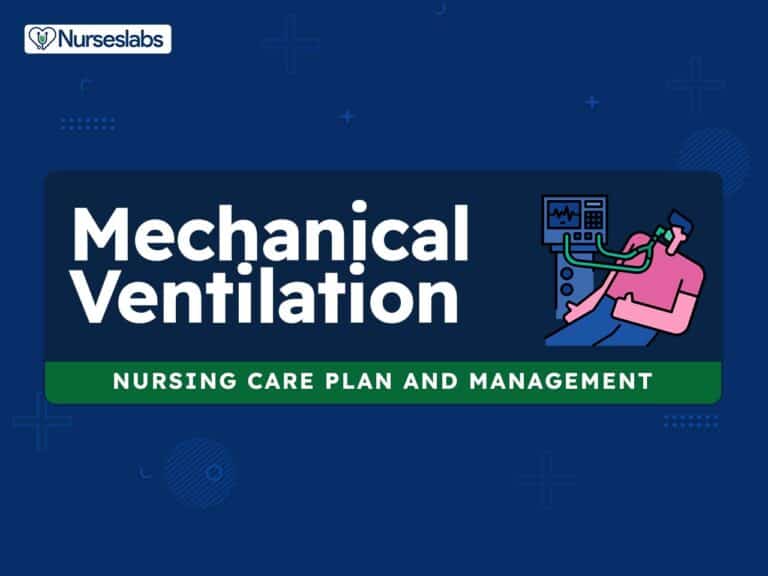
Leave a Comment